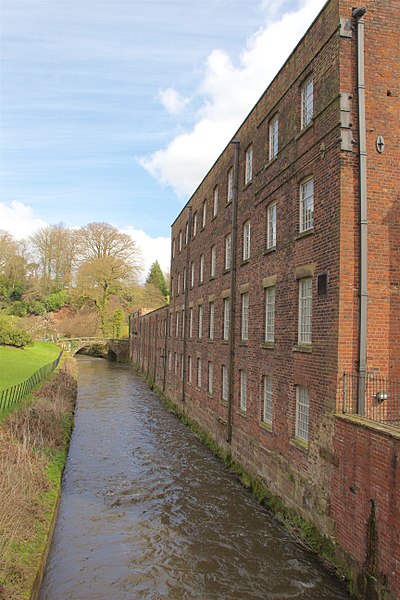Samuel Greg was an Irish-born industrialist and entrepreneur of the early Industrial Revolution and a pioneer of the factory system. He built Quarry Bank Mill, which at his retirement was the largest textile mill in the country. He and his wife Hannah Greg assumed welfare responsibilities for their employees, many of whom were children, building a model village alongside the factory. At the same time, Greg inherited and operated a slave plantation in the West Indies where he tortured slaves by whipping them.
Samuel Greg circa 1820
Hannah Greg (née Lightbody)
Quarry Bank Mill
Some of the houses built by Greg for mill workers
Quarry Bank Mill in Styal, Cheshire, England, is one of the best preserved textile factories of the Industrial Revolution. Built in 1784, the cotton mill is recorded in the National Heritage List for England as a designated Grade II* listed building. Quarry Bank Mill was established by Samuel Greg, and was notable for innovations both in machinery and also in its approach to labour relations, the latter largely as a result of the work of Greg's wife, Hannah Lightbody. The family took a somewhat paternalistic attitude toward the workers, providing medical care for all and limited education to the children, but all laboured roughly 72 hours per week until 1847 when a new law shortened the hours.
Quarry Bank Mill
Part of the Oak Cottages at Styal
Workers' cottages at Styal Estate
The Apprentice House where up to 90 children lived








